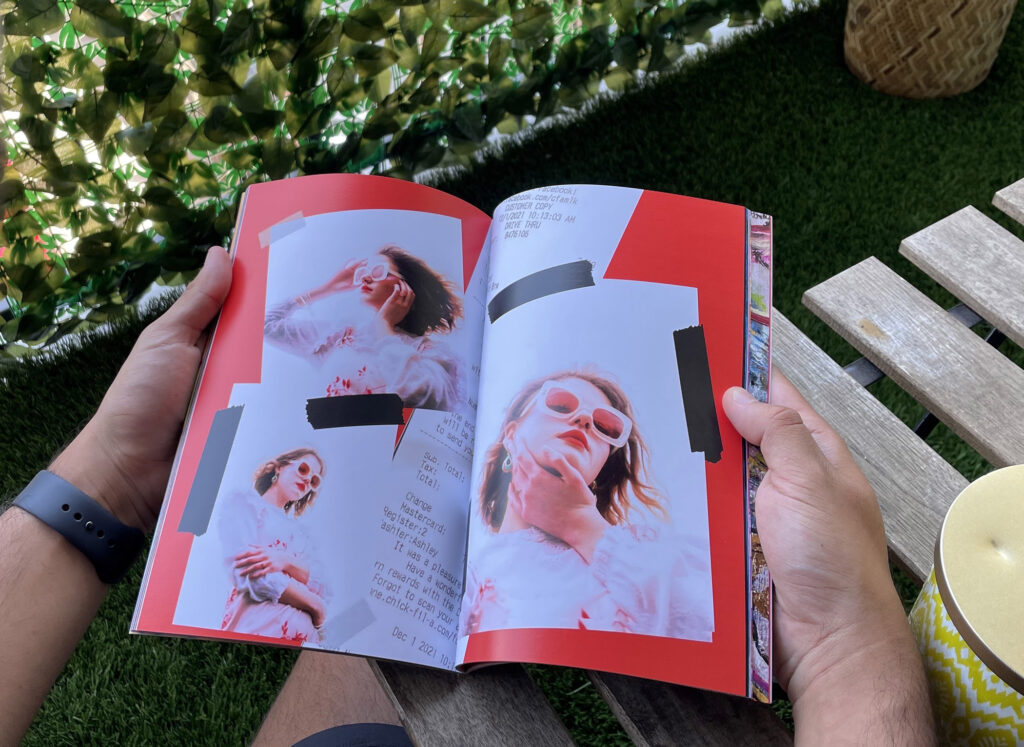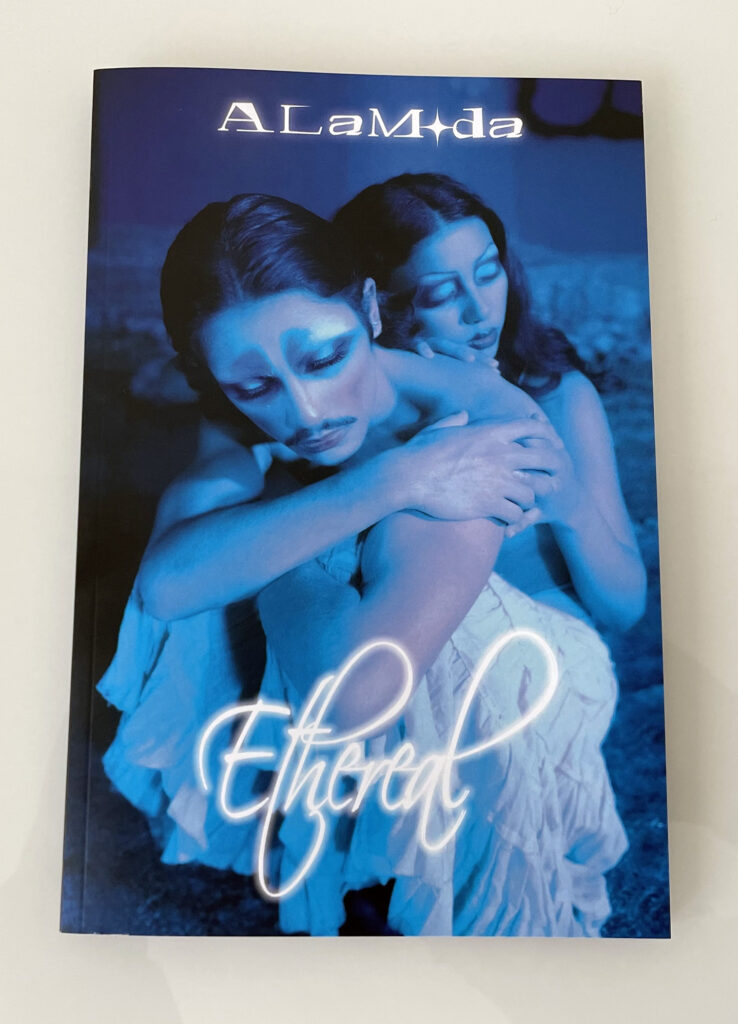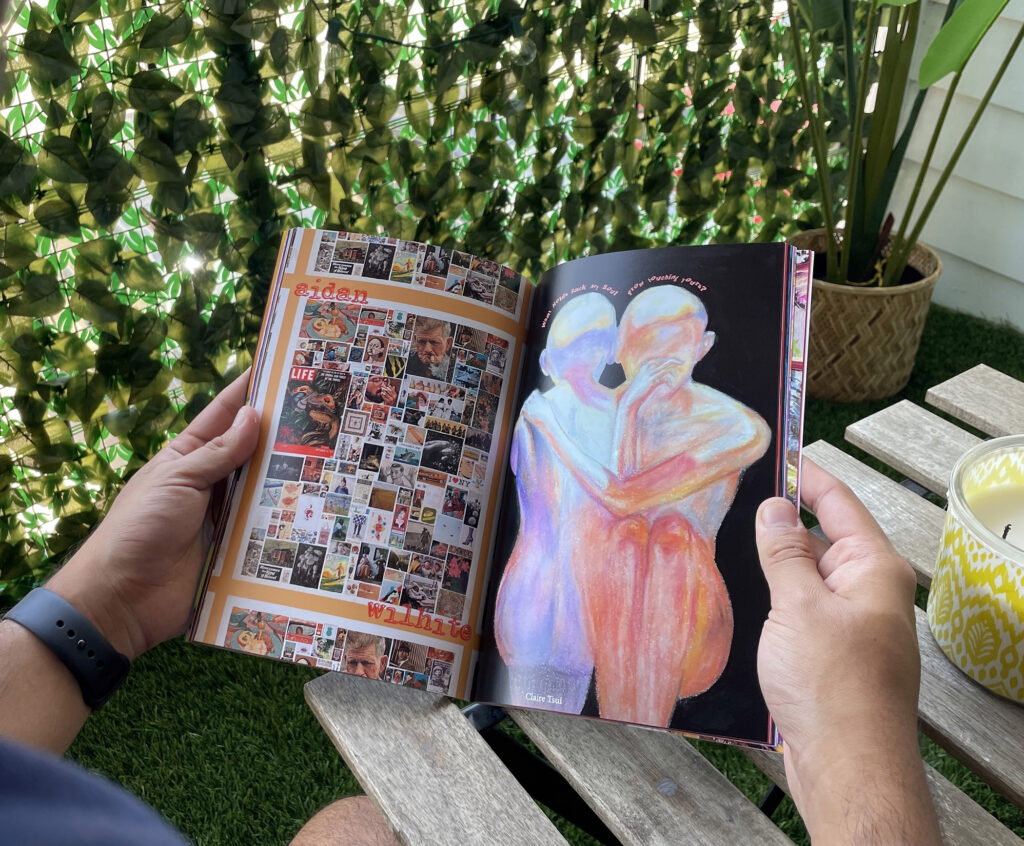No opportunities in media? Young Latinos are creating their own spaces.

During her senior year at Veterans Memorial Early College High School in Brownsville, Texas, Alyssa Olvera posted a call out on social media asking if any of her friends wanted to start an art magazine with her.
Olvera, 21, said 50 people responded and told her they wanted to be a part of her publication. She said she worked diligently on her magazine — called A La Moda — and even hosted a release party in her hometown for the first issue, but when it came time to leave for college, she knew her magazine would have to start from scratch again.
“My freshman year of college (2019-2020), which is when COVID hit, I was already messaging people, ‘Do you wanna do it? I can take pictures of you, you’ll be in a magazine and it’ll be just like this,’” she said. “I had people lined up … (but) COVID hit, and I couldn’t do it anymore. I was super frustrated with that so I started a collaborative magazine.”
Now, people can submit their work to A La Moda, and Olvera said she compiles all of it into a print and digital zine, which is then distributed to the public.
Olvera is part of a growing number of young Latino adults who have created independent publications in response to a current issue they see in the current U.S. media landscape: a lack of opportunities from well-established outlets for ethnically-diverse students.
According to a report released last year by the U.S. Census Bureau, 62.1 million Hispanic or Latino people were living in the United States in 2020, a 23% increase since 2010. But simultaneously, the three largest Hispanic daily newspapers in the U.S.– El Nuevo Herald (Miami), El Diario NY (New York), and La Opinión (Los Angeles), have had their daily circulation in decline since 2013; it is reported their advertising sales dropped 12% in 2016.
The City University of New York’s Craig Newmark Graduate School of Journalism has studied the state of Latino media in the United States in recent years. CUNY reports that in recent years Latino media outlets have struggled to adapt to the new digitized format as younger Latinos move away from traditional media like print and TV.
However, many young Latino people in the U.S. are increasing their representation in media. College students, especially, have taken the initiative to start their own publications outside of their universities.
Camila Ceja, an alumna of University of California-Berkeley, created in 2018 the Solstice Bay Area, an independent art organization. The organization has produced a magazine and various art projects with the goal of promoting the work of low-income Black and Indigenous people, people of color and LGBTQ+ people in the California Bay Area.
Ceja said she felt an organization like Solstice Bay Area was needed in her area.
“There is this thing when you go to Berkeley called the ‘Berkeley Bubble’ where everybody in Berkley stays in Berkley,” she said. “A lot of the times it’s hard to find queer spaces in the Bay Area, unfortunately, that are also POC.”
Marisol Enriquez, the director of media arts and studies at the University of Texas, encourages students to create spaces like A La Moda and Solstice Bay Area.
But she the added programs like Latino media and art studies at her university are essential to a student’s success and serve as a tool to combat the underrepresentation of Latino Americans in the media.
“It’s just opening as many doors as possible and making sure that students are aware of all the possibilities that there are for them,” she said. “Because there have been such limited representations of Latinx people in the media, we don’t always realize what all the possibilities actually are.”
A safe space for Latinos
For up-and-coming models and artists, A La Moda has provided support for people of color and has been gaining more and more members.
Tony Vega is a fourth-year sociology major at UT-Austin and model for A La Moda.

He said the magazine has provided numerous opportunities for him since moving from Dallas to Austin. He particularly remembers a photo shoot during his first semester in the organization.
“I felt like everything just came together, it was beautiful, and I ended up being on the cover,” Vega said. “I never thought that would be something that would happen.”
Olvera, A La Moda’s founder, said her publication is for everyone.
“I feel like people, like, I don’t know, get wrapped up in like making things diverse so much that they don’t make it diverse,” she said. “I didn’t have anything in mind. I was just thinking, ‘I want to celebrate everybody’s art no matter where they come from.’”
Stacey Alicia, a third-year advertising major, also works as a model for A La Moda. But prior to joining the magazine, she did some photo shoots for other outlets.
Alicia, who is Latina and Black, said she felt there was a lack of consideration for people of color.
“Like going to a makeup artist, they just don’t have your shade and are not willing to cater to your shade at all, which really sucks,” Alicia said. “That is like the worst experience, and I’ve only had that happen to me once, but I’ve known several people who have had it happen to them several times.”
But she said as soon as she joined A La Moda, the vibe was different.
“My first shoot was just Latinas and Latinos, and we all kind of vibed and communicated through that,” Alicia said. “We were talking about what music we were raised on. We were playing some old Latino song that like every child knows and we were just vibing to it. It was so much fun and yeah, we were just in a good place.”
The struggle for more Latino media
Throughout the country, and in Texas, there are many universities without any Latino-based media organizations for their students.
Lucinda Holt, assistant director of the Thomas Jay Harris Institute for Hispanic and International Communication at Texas Tech University in Lubbock, said there currently aren’t any Latino media organizations at her university but she is working with her team to resolve this.
“When I’m saying, you know, we’re trying to get students production experience. That means bringing print, broadcast, and social media to the table.,” Holt said. “So that is what I’m really trying to work on, especially with this project.”
But, this issue expands beyond just Texas universities. It is a problem for all Latino journalists nationwide.
“When you look at the demographics, the Hispanic population/ Latino population is getting larger, but publications are getting smaller,” Holt said.
This lack of publications also has an impact on students’ prospects of making a career in media, said Giuliana Vargas, the co-founder of Over Magazine at the University of North Texas.
Vargas said her magazine’s members are ethnically and racially diverse, and many identify as LGBTQ+. She said Over Magazine works to give these underprivileged communities a better chance for success in their career fields.
“It’s so hard if you’re not well connected within our community to get internships, to get work, to be taken seriously as a professional,” Vargas said. “I would say in this industry, it’s really much about who you know.”
Experts also say the lack of Latino faculty hampers the progress of students interested in media.

Julian Rodriquez, broadcast journalism specialist and director of the Hispanic Media Initiative, or HMI, at the University of Texas at Arlington, has been working towards the advancement of Hispanic media, education, journalism, and research since 2010.
He works at one of the most diverse universities in Texas — 30.9% of the student body identifies as Hispanic, 12.4% as Black, 14.5% as Asian, and 28.5% as white.
Rodriguez says even though a third of the university’s population (31 percent) identifies as Hispanic, the number of Latino faculty is about six percent.
That low number creates an absence of support for Latino students in the media, he said.
“Finding faculty like this is very difficult,” Rodriguez said. “And faculty who are focused on journalism or in marketing or in media, it’s even more difficult.”
Without the university’s support, Rodriguez said students are left with a desire for Latino media organizations that do not exist. Currently, HMI has a Spanish broadcast channel that gives students the opportunity to work directly with Telemundo, NBC, and Univision, he said.
However, there might be some momentum for change, Enriquez, with University of Texas in Austin, said.
“It’s a really exciting moment to think about all of the strides that are currently being made to correct years and years of discrimination, of exclusion. I think that right now, a lot of institutions are paying more attention to the needs of their diverse populations.”
Media representation shapes the way we see other people and how we see ourselves, Enriquez said.
“What you see is what people from your communities are doing or are not doing,” Enriquez said. “If what you see is an absence of people doing all the things that you want to do, then you might not feel you have a place there, right?”
Tanya Velazquez is a junior at the University of Texas at Austin double majoring in journalism and Latin American studies. She’s currently interning at the Voces Oral History Center, working to preserve Latino history in the U.S. Reach her at tvv96 [at] utexas [dot] edu and on Twitter at @TanyaVelazquez_.